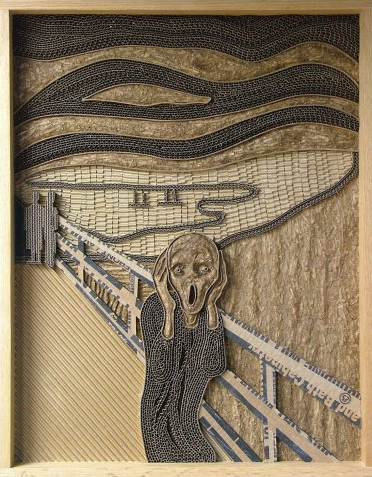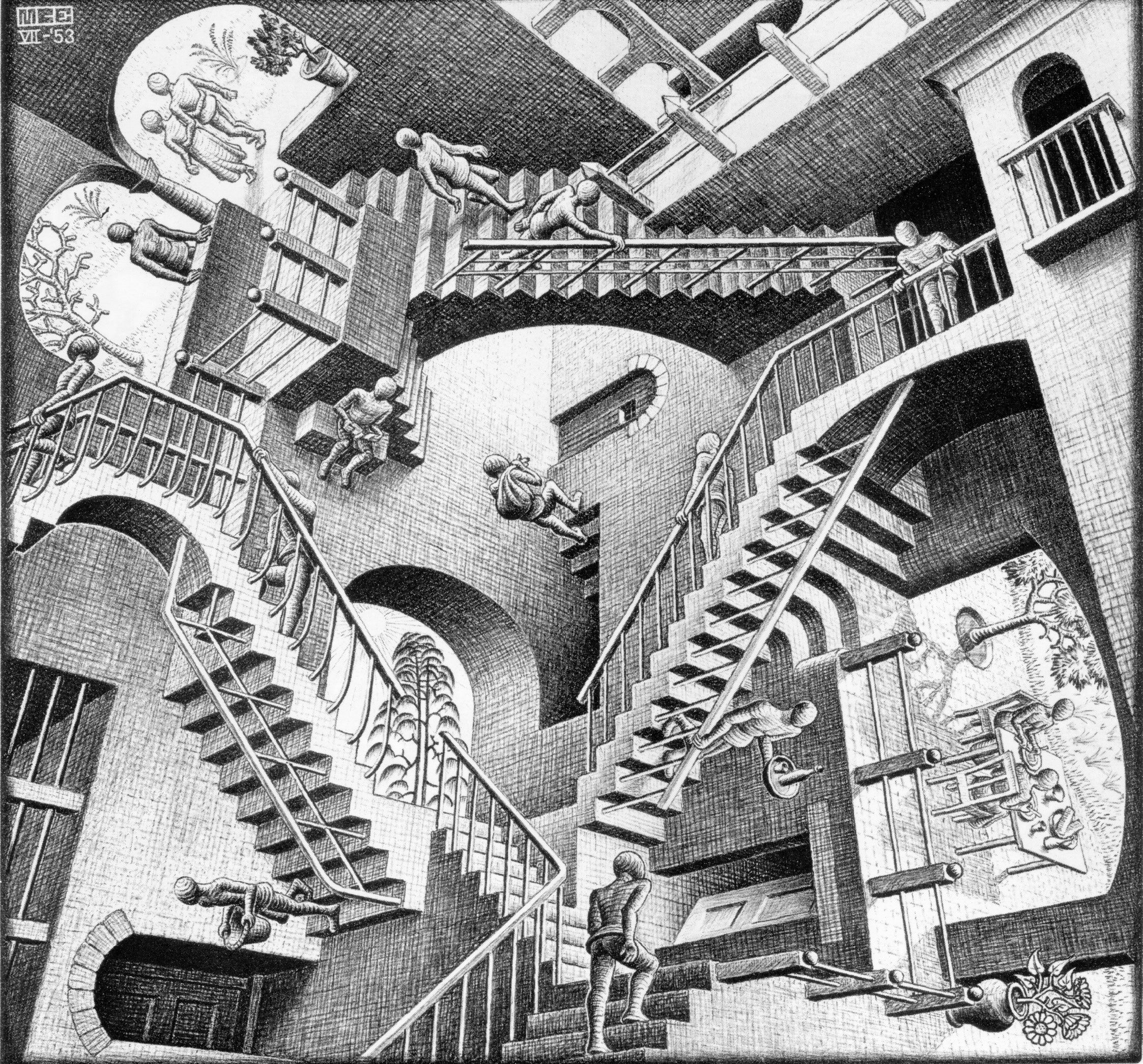
Wednesday, November 30, 2011

Tuesday, November 29, 2011
1000 Journals Project


The 1000 Journals Project is an ongoing collaborative experiment attempting to follow 1000 journals throughout their travels. The goal is to provide a method for interaction and shared creativity among friends and strangers. This awesome idea is only slightly flawed in the sense that you have a better chance at winning the lottery than coming across one of the original 1000. There is is this new 1001 journals (i think thats what its called) that you can go to and request a journal.
Monday, November 28, 2011
Nicholas Jones
Fragile Industries Studios

Though the artist doesn't present her name.. her website shows tons of material of book alterations. Apparently it's what she specializes in, but she also does shrines and other various things. Her technique is a little different than most examples I've seen because she covers each and every page with art and pictures (like a scrapbook) without using any of the actual lettering from the books. She also types up what she wants to put in the book herself, to glue in. She explains that the purpose of her work as an artist is one of revelation. Her work is detailed and complex so that something new is revealed withe very viewing.
Rebecca Sawyer
Sunday, November 27, 2011
Barton Lidice Benes
Barton Lidice Benes is an artist dating back to around 1974. This specific piece is titled Livre Censure (or censored book). He started this technique after being on a train going to Philadelpha and was reading a biography about Nixon. He started scratching things out as he read it, and by the time he reached Philadelphia he had basically scratched out the entire book. After that, he started nailing books shut and tying them up.
Shauna Palmer
 This piece is by a young artist by the name of Shauna Palmer and is a part of her Altered Book series. One of the many things I love about this piece is her use of different mediums to put together a magnificent pair of pages. Bringing together old photos, stamps, colored pencils, sharpies, and the text itself creates layers within the composition and adds irony to the text " two more Clean white sheets of paper" located on the left page. Also, using the text to build a crown on top of the baby portrait is pretty creative in my eyes.
This piece is by a young artist by the name of Shauna Palmer and is a part of her Altered Book series. One of the many things I love about this piece is her use of different mediums to put together a magnificent pair of pages. Bringing together old photos, stamps, colored pencils, sharpies, and the text itself creates layers within the composition and adds irony to the text " two more Clean white sheets of paper" located on the left page. Also, using the text to build a crown on top of the baby portrait is pretty creative in my eyes.
Craig Paul Nowak
 "I paint to show my audience what they most often take for granted, that which can not be seen, only felt. And in doing this, I must remain open to infinite possibilities because with limitations comes slow yet immanent demise. Just as well, the use of a single method and medium remains an insufficient means of discussing a complex binary such as that of yin and yang, or in this case, the connection between a man’s soul and the man himself." -Craig Paul Nowak
"I paint to show my audience what they most often take for granted, that which can not be seen, only felt. And in doing this, I must remain open to infinite possibilities because with limitations comes slow yet immanent demise. Just as well, the use of a single method and medium remains an insufficient means of discussing a complex binary such as that of yin and yang, or in this case, the connection between a man’s soul and the man himself." -Craig Paul NowakTuesday, November 22, 2011
Sunday, November 20, 2011
Mark Langan

Sunday, November 13, 2011
Su Blackwell
 Wow! Patience is really a virtue. This great piece was done by Su Blackwell. The altered book was made into a pop up book through the patient use of the Xacto-knife. Instead of just slicing and dicing all of the pages like the below artist, Brian Dettmer, Su has taking the scraps and created 3-D shapes which end up giving the book new life.
Wow! Patience is really a virtue. This great piece was done by Su Blackwell. The altered book was made into a pop up book through the patient use of the Xacto-knife. Instead of just slicing and dicing all of the pages like the below artist, Brian Dettmer, Su has taking the scraps and created 3-D shapes which end up giving the book new life.
Friday, November 11, 2011
Brian Dettmer

Wednesday, November 9, 2011
Nothing is what it was intended to be, in the hands of a creative person.

Tuesday, November 8, 2011
 recycled words
recycled words Sunday, November 6, 2011
Will Ashford


Some really great examples of altered book pages by Will Ashford. He makes very visually interesting use of both his own media and the text of the book he has chosen, and has interwoven the images so well into the text that it almost looks like it's part of the book itself. He creates a dark, enigmatic feel in a lot of his pages that draws the viewer in and makes them wonder. He has some more excellent examples on his website that might help anyone having trouble incorporating text and media in a cohesive way.
 This is a self-portrait done by Pablo Piscasso in 1907. The painting was during Picasso's cubist period which was also the same time he painted the famous Les Demoiselles d'Avignon. The painting displays a design element that is extremely prevalent and makes the image extremely great. Picasso uses asymmetry on the left side of background to lure the audience into a false sense of security and keep everyone off guard. Like in all of his works, he tries to paint something the audience hasn't seen. He does just that.
This is a self-portrait done by Pablo Piscasso in 1907. The painting was during Picasso's cubist period which was also the same time he painted the famous Les Demoiselles d'Avignon. The painting displays a design element that is extremely prevalent and makes the image extremely great. Picasso uses asymmetry on the left side of background to lure the audience into a false sense of security and keep everyone off guard. Like in all of his works, he tries to paint something the audience hasn't seen. He does just that.
Humenent : Pottermore
This is a video of J.K. Rowling speaking about a new website experience, Pottermore. The video displays graphics of a book being designed through cut outs of the pages of the book to create other images. I think this is a very unique way to approach the 'humenent' idea that we have been talking about in class. In addition, the way that it was presented to the public was especially intriguing because it turned it into a digital, moving, object to tell the story that J.K. Rowling is talking us through.
Friday, November 4, 2011
Oh Isaac

Isaac Salazar-
He began with simple letters and then moved on to increasingly more complex typefaces. Depending on the intricacy of the letters, each artwork takes anywhere from a day to two weeks each to complete, using only basic arithmetic and an exacto knife as he does. He derives his inspiration from the content of the material he is working with. For example, he carved a recycle symbol on Robert Lamb’s A World without Trees.
An advocate of alternative energy and recycling, he rarely uses new books, but opts instead for books that may otherwise go to waste. He cuts, folds, and slices carefully, so as to preserve the books’ integrity. Recently, he has ventured into logos and symbols—an area he would like to pursue further.
Historic Events as Repurposed Art
This sculpture made by two Cuban artists Alain Guerra and Neraldo de la Paz is entirely made from old shirts. The sparse use of color and near-symmetry are very powerful. It's particularly fascinating, because I imagine it would be very difficult to build a sculpture using objects as big as shirts. Each shirt would need to be very deliberately placed to give it the realistic aspect it undoubtedly achieves.
Wednesday, November 2, 2011
Francis Bacon





